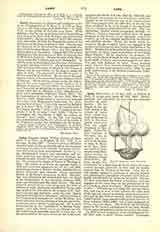

Lamy, FRANCOIS, an ascetical and apologetic writer of the Congregation of St-Maur, b. in 1636 at Montireau in the Department of Eure-et-Loir; d. April 11, 1711, at the Abbey of St-Denis near Paris. While fighting a duel he was saved from a fatal sword thrust by a book of the Rule of St. Benedict which he carried in his pocket. Seeing the finger of God it this remarkable occurrence, he took the Benedictine habit at the monastery of St-Remi at Reims in 1658. Shortly after his elevation to the priesthood he was appointed sub prior of St-Faron at Meaux, but a year later resigned this position out of humility. During 1672-5 he taught philosophy at the monasteries of Mont St-Quentin and St-Medard in Soissons. He was the first of the Maurists to teach the Cartesian system of philosophy. In 1676 he came to St-Germain-des-Pres near Paris where he taught theology until 1679. The general chapter of 1687 appointed him prior of Rebais in the Diocese of Meaux, but he was ordered by the king to resign his office in 1689. The remainder of his life he spent in literary pursuits at St-Denis. He was one of the most famous writers of his times and was an intimate friend of Bossuet. Of his twenty printed works the following are the most important: “‘Write evidente de la Religion chretienne” (Paris, 1694); “Le Nouvel Atheisme Renverse, ou refutation du systeme de Spinoza” (Paris, 1696; 2nd ed., Brussels, 1711); “Sentiments de piete sur la profession religieuse” (Paris, 1697); “De la Connaissance de soi-meme” (6 vols. ibid., 1694-8; 2nd ed., 1700), which raised a controversy between the author and Malebranche concerning the disinterested love of God; “L’incredule amen a la Religion par la Raison” (ibid., 1710); “De la Connaissance et de l’Amour de Dieu” (ibid., 1712); “Lettre d’un theologien a un de ses amis” (ibid., 1699); “Plainte de l’apologiste des Benedictins a MM. les prelats de France” (ibid., 1699). In the last two treatises the author defends the Maurist edition of the works of St. Augustine against the Jansenists and the Jesuits.
MICHAEL OTT

